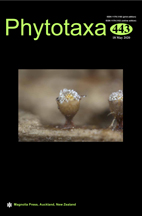Abstract
Mainland Southeast Asia, particularly southern China and eastern Indochina, is known as an important centre of diversity for Asparagaceae (Averynov & Tanaka 2012). Tupistra Ker Gawler (1814: 1655) belonging to the subfamily Nolinoideae (Chase et al. 2009) comprises a little more than 30 species (Averyanov et al. 2019). They spread across southern and south-eastern Asia, including Nepal, Bhutan, India, Bangladesh, Myanmar, Thailand, China, Laos, Vietnam, Malaysia and Indonesia (Tanaka 2010a). The genus is characterized usually by the leaves tapering into petiole, a relatively large stigma broader than the style, except for the very uncommon species T. siphonantha Tanaka, Vislobokov & Hannon (2018: 32), a stout terete style almost as thick as the ovary and tuberculate (rarely smooth), globular berry-like fruits (Tanaka 2010a). Eight species of Tupistra have been reported for India: T. ashihoi Roy, Odyuo & Averyanov (2017:52), T. clarkei Hooker (1892: 325), T. khasiana Roy, Mao & Averyanov (2017: 257), T. nagarum Odyuo, Roy & Mao (2018:2), T. nutans Wall. ex Lindley (1839: 1223), T. stoliczkana Kurz (1876: 199), T. tupistroides (Kunth 1848: 12) Dandy (1932: 329), and T. leonidii Roy & Mao (2018: 37). Among them, T. ashihoi and T. stoliczkana have an upright flowering stem, whereas the others have a flowering stem curved downwards.

